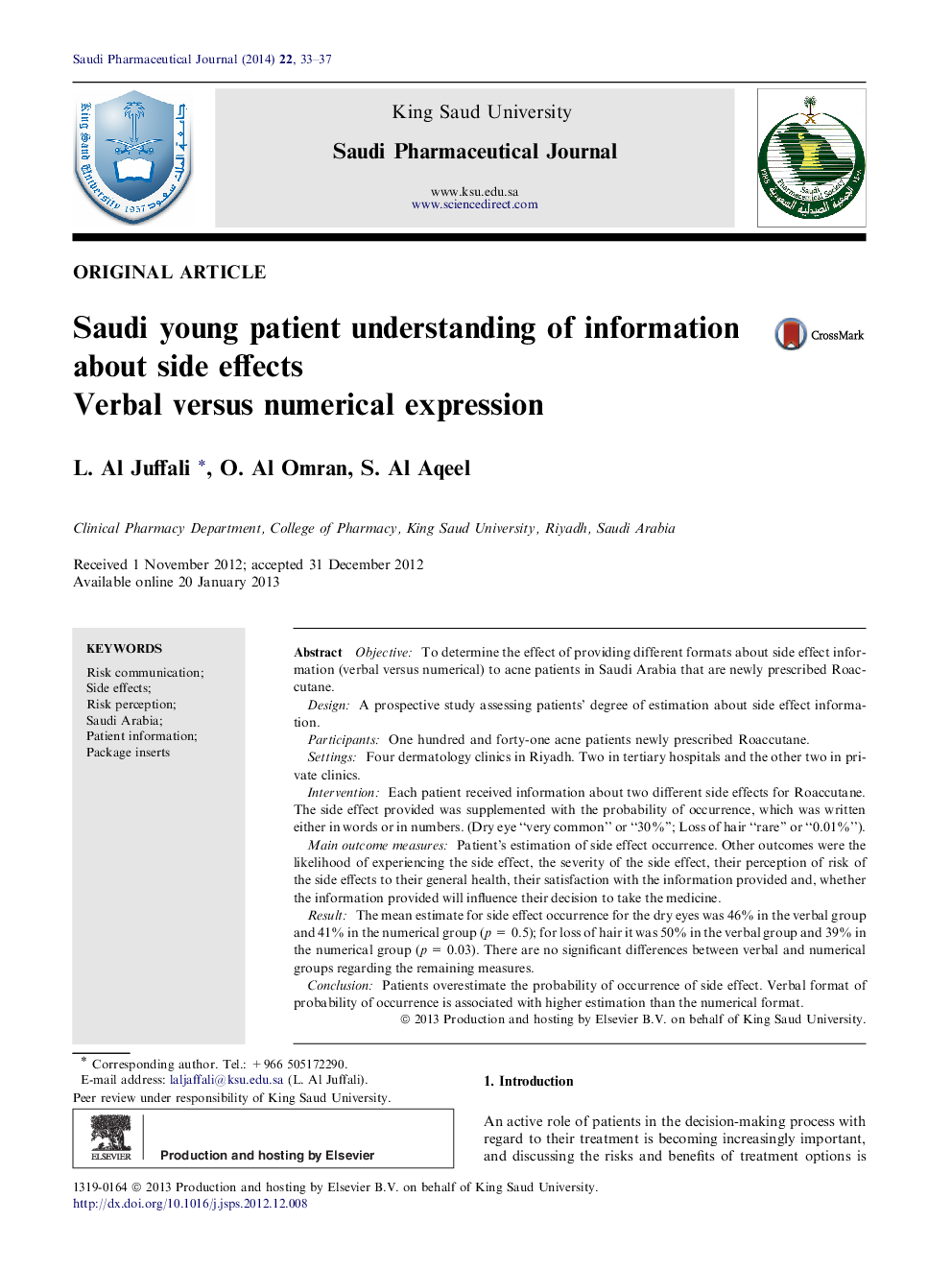| Article ID | Journal | Published Year | Pages | File Type |
|---|---|---|---|---|
| 2509258 | Saudi Pharmaceutical Journal | 2014 | 5 Pages |
ObjectiveTo determine the effect of providing different formats about side effect information (verbal versus numerical) to acne patients in Saudi Arabia that are newly prescribed Roaccutane.DesignA prospective study assessing patients’ degree of estimation about side effect information.ParticipantsOne hundred and forty-one acne patients newly prescribed Roaccutane.SettingsFour dermatology clinics in Riyadh. Two in tertiary hospitals and the other two in private clinics.InterventionEach patient received information about two different side effects for Roaccutane. The side effect provided was supplemented with the probability of occurrence, which was written either in words or in numbers. (Dry eye “very common” or “30%”; Loss of hair “rare” or “0.01%”).Main outcome measuresPatient’s estimation of side effect occurrence. Other outcomes were the likelihood of experiencing the side effect, the severity of the side effect, their perception of risk of the side effects to their general health, their satisfaction with the information provided and, whether the information provided will influence their decision to take the medicine.ResultThe mean estimate for side effect occurrence for the dry eyes was 46% in the verbal group and 41% in the numerical group (p = 0.5); for loss of hair it was 50% in the verbal group and 39% in the numerical group (p = 0.03). There are no significant differences between verbal and numerical groups regarding the remaining measures.ConclusionPatients overestimate the probability of occurrence of side effect. Verbal format of probability of occurrence is associated with higher estimation than the numerical format.
